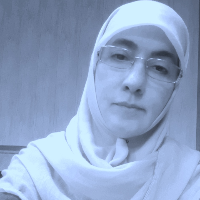A StylisticAnalysis of the Bordersof Iranian Rugs in the 16thAD Century Based on Rug Weaving Centers
The border of a rug asa frame of decorative systemsisindependent of its context and is a result of repeating a set of motifs with considerable visual capacities. The stable presence of borders with distinctive features in Safavid rugs can indicate the styles which define the context of each region’s productions. Therefore, the differences of borders in any of the weaving regions can be considered as the product identifier. In this regard, two questions have been answered; What styles do the decorative elements of 10th-century rugs represent in productions of different regions? How doesthe cultural-artistic situation of the weaving areas relate to the dominant styles on the borders of the rugs?
This study attempts to fill the gap onthe classification of rugs based on their borders. The main purpose of this study is to present the stylistic analysisof the rugs in the 10thAHcentury based on the borders’ differences to present the patterns of the original borderof each region to contemporary designers,who deal with regional rug designs.
This is qualitative research using structural content analysis based on library and Internet data. Fifty-seven Safavid rugs belonging to the 10th century (the period of Shah Ismail and Shah Tahmasb kingdoms) were selected from documentary sources in a purposeful and non-random manner. Based on the most frequent linear structures extracted from the borders (thirty-eight samples), the styles in association with them were defined.
By analyzing the visual systems governing the borders of the rugs, the dominant styles were introduced based on the dominant motifs (floral arabesque, cloudband arabesque, and animal fights) and dominant composition Ghalamdani, Pictorial,and Mayegan Herati). The continuity of a decorative motif or structure with various forms in the productions of different regions reinforced the idea that visual systems are identifiers influenced by the cultural backgrounds (religion, politics, and art) of the regions in which the art product has been developed.
- حق عضویت دریافتی صرف حمایت از نشریات عضو و نگهداری، تکمیل و توسعه مگیران میشود.
- پرداخت حق اشتراک و دانلود مقالات اجازه بازنشر آن در سایر رسانههای چاپی و دیجیتال را به کاربر نمیدهد.



